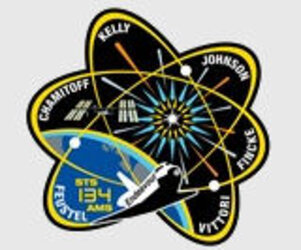Time for science
Even though STS-134 was mainly a logistics flight, Roberto found time to carry out a programme of experiments.
Roberto was a test subject for two ESA-led human physiology experiments that will help scientists to study possible changes in his body after spaceflight. Pre- and post-mission data collection deepens our understanding of the impact of weightlessness on the human body.
ZAG (Z-axis Aligned Gravito-inertial force) investigates the effect of weightlessness on astronaut perception of motion and tilt as well as their level of performance before and immediately after spaceflight. Tests include analysis of motion perception and eye movements while using a track-and-tilt chair.
OTOLITH looks at the adaptation of the human balance system and eyes, which are strongly interconnected to weightlessness for maintaining an astronaut’s capacity for carrying out tasks in space. This experiment assesses the inner-ear organs sensitive to gravity before and after short-duration spaceflight.

The following six experiments are funded by the Italian space agency:
IAPE (Italian Astronaut Personal Eye) is a demonstrator of a small autonomous, programmable micro-vehicle for supporting crew intra and extra vehicular activities. The device is powered by Li-Ion batteries and controlled by a microcontroller receiving inputs from a unit based on gyroscopes.
BIOKIS (Biokon In Space) is a multidisciplinary scientific experiment in which different biological samples as algae, yeast and water bears are evaluated to find out if there is any genetic alteration following a short flight.
IENOS (Italian Electronic Nose for Space exploration) aims at air quality monitoring and searching for possible anomalies in the Station’s atmosphere. Thanks to its three sensor units, IENOS maps the composition and cycles of the Station's atmosphere for correlation with onboard human activity.
IFOAM (Italian Foam Shape Memory) will gather data on shape memory properties of foam samples for future use as energy absorbers and lightweight space actuators. The experiment heated three foaming-phase samples prepared on the ground with different shapes, to evaluate the shape-recovery capabilities in space.
NIGHT VISION is aimed at studying how natural antioxidants can protect light-sensitive algae cells similar to the human retina against space radiation. The results could help in improving the night vision in astronauts as well as in aircraft pilots. Wild-type and mutant C. Reinharditii algae cells were tested, followed by a comparative evaluation after the flight.
- VIABLE ISS evaluates bacterial and fungal development on Station internal surfaces for controlling their biological contamination and the quality of drinkable water. The results will be useful for research on long-duration missions in closed environments.







